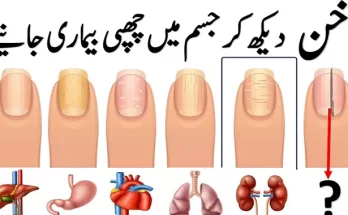
A bright, white smile is often associated with health, beauty, and confidence. However, many struggle with yellow teeth, which can diminish self-esteem and affect overall appearance. Understanding the common mistakes that lead to yellowing teeth can help prevent this issue and maintain a dazzling smile. Here are the top 8 mistakes that cause yellowish teeth and how to avoid them.
1. Poor Oral Hygiene
One of the most common reasons for yellow teeth is poor oral hygiene. Failing to brush and floss regularly allows plaque and tartar to build up on your teeth, leading to discoloration. Brushing twice a day and flossing daily are essential habits to remove food particles and bacteria that can cause staining. Using an antiseptic mouthwash can also help keep your teeth clean and prevent yellowing.
2. Consuming Staining Foods and Beverages
Certain foods and drinks are notorious for staining teeth. Coffee, tea, red wine, and dark-colored sodas contain chromogens, which are compounds that can stick to tooth enamel and cause discoloration.
Additionally, acidic foods and drinks can erode enamel, making it easier for stains to set in. To minimize staining, try to limit the consumption of these items. If you do indulge, rinse your mouth with water or brush your teeth afterward to reduce their impact.
3. Smoking and Tobacco Use
Smoking and using tobacco products are major culprits behind yellow teeth. The nicotine and tar in tobacco can create stubborn stains that penetrate the enamel and are difficult to remove. Quitting smoking or using tobacco is not only beneficial for your overall health but also for maintaining a brighter smile. There are numerous resources and support systems available to help you quit this harmful habit.
4. Skipping Dental Checkups
Regular dental checkups are crucial for maintaining oral health and preventing yellow teeth. Dentists can professionally clean your teeth, removing plaque and tartar that brushing and flossing might miss. They can also detect early signs of dental issues and provide treatments to prevent further damage. Aim to visit your dentist at least twice a year for routine cleanings and checkups.
5. Aging
Aging is a natural process that can contribute to yellow teeth. As you age, the outer layer of enamel on your teeth wears away, revealing the yellowish dentin underneath. While you can’t stop aging, you can take steps to slow down enamel wear. Using fluoride toothpaste, avoiding overly abrasive toothpaste, and consuming a diet rich in calcium and vitamins can help maintain enamel strength.
6. Not Drinking Enough Water
Water is essential for overall health, including dental health. Drinking water helps wash away food particles and bacteria that can cause stains and decay. It also stimulates saliva production, which naturally cleanses the mouth. Make a habit of drinking water throughout the day, especially after meals, to keep your teeth clean and reduce the risk of yellowing.
7. Using the Wrong Toothpaste
Some toothpaste brands contain harsh abrasives that can wear down enamel and lead to yellow teeth. Whitening toothpaste can be effective for removing surface stains, but overuse can cause enamel erosion. Choose a toothpaste that is gentle yet effective, preferably one recommended by dental professionals. Toothpaste with baking soda can be a good option for mild whitening without being too abrasive.
8. Ignoring Dental Issues
Ignoring dental problems like cavities, gum disease, and enamel erosion can lead to yellow teeth. These issues can create rough surfaces and pockets where stains can accumulate. Addressing dental problems promptly can prevent further damage and discoloration. If you notice any signs of dental issues, such as tooth sensitivity, bleeding gums, or persistent bad breath, consult your dentist for an evaluation and treatment.
Tips for Maintaining White Teeth
Now that we’ve identified the common mistakes that cause yellow teeth, here are some tips to help you maintain a bright and healthy smile:
Brush and Floss Regularly: Stick to a consistent oral hygiene routine. Use a soft-bristled toothbrush and fluoride toothpaste to brush your teeth at least twice a day. Don’t forget to floss daily to remove plaque and food particles from between your teeth.
Limit Staining Foods and Drinks: Reduce your intake of coffee, tea, red wine, and dark sodas. When you do consume these items, rinse your mouth with water or brush your teeth afterward to minimize staining.
Quit Smoking: Seek support to quit smoking or using tobacco products. Your teeth and overall health will greatly benefit from this positive change.
Stay Hydrated: Drink plenty of water throughout the day to help cleanse your mouth and support saliva production.
Use a Straw: When drinking staining beverages, use a straw to minimize contact with your teeth. This simple habit can help reduce the risk of discoloration.
Maintain a Balanced Diet: Eat a diet rich in fruits, vegetables, and dairy products. Foods like apples, carrots, and cheese can help clean your teeth and strengthen enamel.
Regular Dental Visits: Schedule routine dental checkups and cleanings. Professional cleanings can remove surface stains and detect any potential dental issues early.
Consider Whitening Treatments: If your teeth are already yellow, consider professional whitening treatments. Over-the-counter whitening products can also be effective, but it’s best to consult your dentist for recommendations.
Yellow teeth can be a source of embarrassment and low self-esteem, but understanding the mistakes that cause yellowing can help you prevent and address this issue. By maintaining good oral hygiene, making mindful dietary choices, and seeking regular dental care, you can keep your teeth white and healthy. Remember, a bright smile starts with good habits and regular care. Make these changes today to enjoy a confident, radiant smile for years to come.






